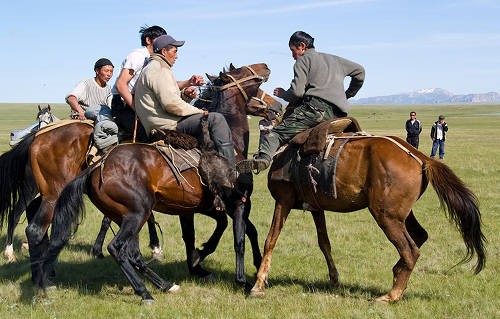New Kirgiz, or Novokirgizskaya, horses were developed in the
state and collective farms of Kirgiz, Russia, by crossing local horses with the
Don and the Thoroughbred horses. New Kirgiz horses are well adapted to highland
conditions. They are used for stock work and meat and milk production. They are
short-legged and massive and they have a strong constitution. In type and
conformation they closely resemble Don horses.
The average measurements of stallions (in cm) are: height at
withers 156, body length 158, chest girth 188, the cannon bone girth 20.5.
Mares' measurements are somewhat lower: 151,155, 180 and 19 respectively.
New Kirgiz horses have a medium-sized clean-cut head with
low neck, well-defined withers, straight and level back and heavily muscled
croup. Their top-line is level. Legs are clean-cut with tendons well defined.
Sickle-hocked legs often occur.
There are three recognized intra-breed types: saddle, thick
and massive, standard. Mares yield up to 20 kg of milk daily. They have
performed well on hippodrome trails. Their speed records are: 1600 m in 1 min
48 sec, 2400 m in 2 min 44.2 sec.
At present the breed numbers 56,650, including 10,700
purebreds.

